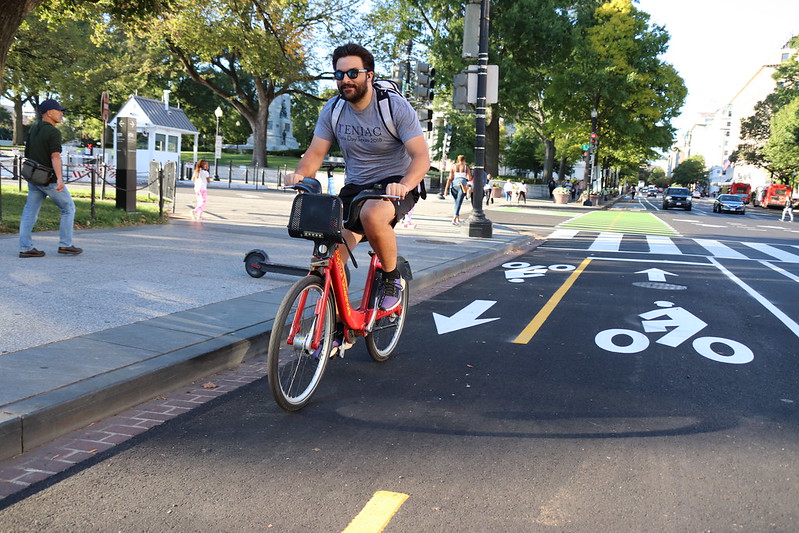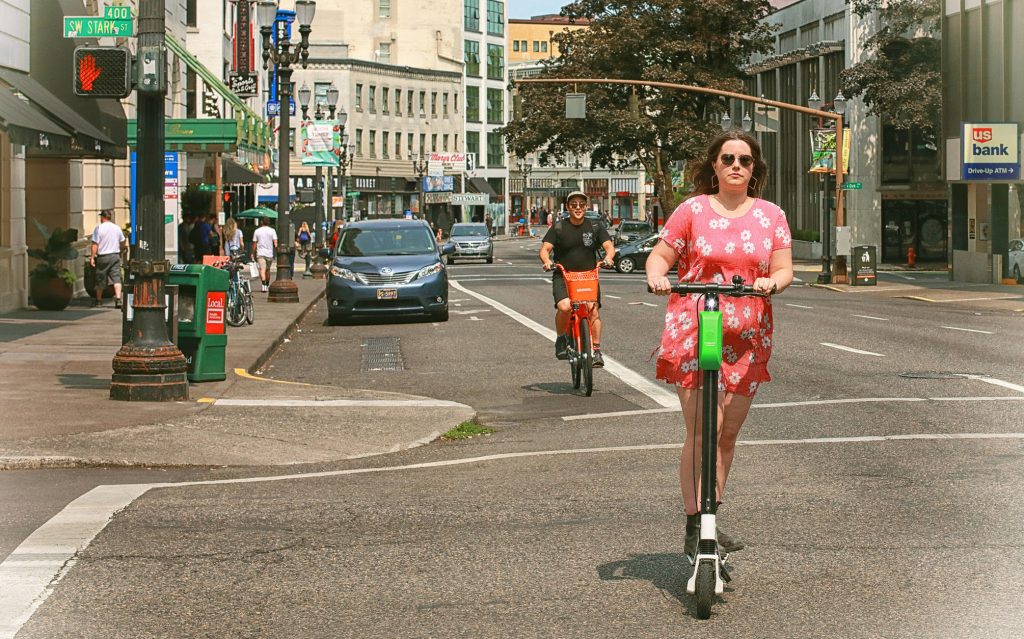
Focusing on the positives of dockless bikes and scooters

Cities are quickly passing policies to manage the influx of dockless bike share and scooters in their communities. How can they craft policies to achieve the outcomes they want, rather than simply avoiding the ones they don’t?
We’re more than halfway through 2018 and shared active transportation services such as dockless bike share and stand up electric scooters continue to expand, often without warning, to new cities across the country. As a result, cities are beginning to pass policies and regulations to manage the demands and challenges these new services create.
But, instead of shaping these services in a way that maximizes their positive impacts, so far, their policies seem to be more focused on simply preventing potential negative outcomes. In order to unlock the full benefits of these vehicles, they’ll need to craft policies that address both.
One of the starkest examples of this is how cities are allocating space for these vehicles, both when they’re in use and not. To prevent dockless scooters and bikes from blocking sidewalks and creating chaos in the right-of-way, Denver, for example, has passed requirements for operators to install and maintain painted parking zones throughout the city.
Creating parking spaces is a great way to ensure these vehicles aren’t making city streets less safe when they’re not in motion. But, this should be paired with efforts to create a safer environment for these vehicles and their users when they are in motion. In order to foster the adoption of these services and truly make their streets safer, cities should clearly articulate where these vehicles should operate and carve out protected spaces for people to ride.
The need for protected infrastructure has been apparent for years with bicyclists and pedestrians and is quickly becoming clear with scooters as well. Last month, Jenasia Summers, a 21-year-old woman in Cleveland, was struck and killed by a car while riding a scooter in a six-lane road with no dedicated space for active transportation users. Stories like this are far too common and are directly related to the low rates of active transportation users—half of Americans would like to ride bicycles more, but are afraid of interactions with motor vehicles.
To help create additional space and infrastructure for active transportation users, cities could use the fees they receive from private mobility providers to build out new bike and pedestrian infrastructure that will foster the adoption of these services.
But, even as scooter companies such as Bird are offering to give cities $1 per vehicle per day for cities to use for better bike infrastructure and safety measures, cities aren’t actually codifying this in policy.
A city’s budget reflects its priorities. If cities are truly committed to increasing active transportation, they should include provisions to directly allocate revenue from these services toward providing better infrastructure as these vehicles increase in popularity. Even if the total amount of money isn’t much, it’s an opportunity for cities to carve out space for their stated priorities.
A greater focus on the positive impacts of new mobility options can go beyond safety. In its updated Free Floating Bike Share Permit Requirements, the Seattle Department of Transportation (SDOT) has incentivized providers to offer adaptive cycles as part of their fleets. Adaptive cycles include a range of two- or three-wheeled vehicles, such as tricycles, hand-pedaled cycles or recumbent cycles where the rider leans back in their seat, that can be used by individuals who are unable to operate a two-wheeled bicycle. To put more of these on the road, SDOT will allow operators to expand their fleets if they provide a certain share of adaptive cycles.
Additionally, SDOT has specified in their policy that they will allocate $50,000 from permitting fees toward developing and leveraging community partnerships to increase adaptive cycling ridership and access. While it still needs to clarify some of the specifics of how these partnerships will work, SDOT has clearly outlined its priorities to increase access by providing incentives to private mobility providers and has allocated additional resources to engage people with disabilities to increase ridership.
It’s very early in the process of determining how to regulate these new shared active transportation services and there’s still much to learn about how best to utilize these new mobility options in service of our long-term outcomes. But, as cities integrate them into their communities and are generating revenue from their operations, there’s an excellent opportunity to chart a new course and develop regulations in way that truly advances their long-term positive outcomes, rather than simply trying to prevent their negative impacts.
At our next Smart Cities Collaborative meeting in Pittsburgh, we’ll discuss these challenges and explore policy provisions for shared active transportation services that maximize their benefits. Stay tuned for an update on what we learn, what the biggest challenges are, and what a model policy could look like.



